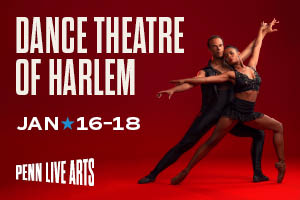In the final, startling moments of Mozart’s Don Giovanni, the giant sculpture of a murdered old man dismounts from his sepulcher to drag the opera’s anti-hero into hell. Artists have often employed a similar supernatural trope: a waxen Hermione reviving in the final scene of Shakespeare’s A Winter’s Tale; an amorous bronze strangling her lover in Prosper Merimee’s Venus of Ille; stone gargoyles alighting from cathedral perches in Hugo’s Hunchback of Notre Dame.
Choreographer Tori Lawrence employed this device in two distinct iterations of her Awakened Ruins. But while her 2011 Fringe Festival hit at Girard College powerfully rendered the decay of bodies in a decaying space, her re-staging fumbled for relevance during the Memorial Day opening weekend of the new Barnes Foundation Museum.
Whether spirits live in rock or clay, or inhabit houses or churches, they always haunt a particular location. Don Giovanni first stumbled across the ghost of the Commendatore in a graveyard, and the statue only lumbered to Giovanni’s mansion when the latter taunted him with an invitation to dinner.
Lawrence originally set her 2011 Awakened Ruins in the abandoned, cavernous third floor of Girard College’s early 19th Century Founders Hall. Plaster peeled from the walls as much as it molted from the hair and bodies of the five women dancers; each dancer looked like strips of cement had fallen from the ceiling and walls and congealed on the floor into papier-mâché hosts for spirits to embody. As Christopher Brooks and Patrick Fink accompanied on violin and piano, these revived bodies lurched and staggered in staccatoed phrases through multiple rooms. The pair of musicians followed from chamber to chamber, generating a mostly improvised score, that in its rich and haunting tones, wove a thick texture of sound that matched the dancers pace: sometimes glacial and drawn out, at others, bounding in bursts of ecstasy.
No similar sense of place emerged from the presentation of Awakened Ruins in the antiseptic atrium at the new Barnes. Instead of five dancers dripping with gooey plaster, only a fine mist of powder settled on the skin of the (now) four female performers. Rather than prowl from one crumbling chamber to the next, these imported ruins strode processional style down the atrium’s long expanse, which overwhelmed their presence. One still carried a lantern—a necessary beacon in the darkened halls at Girard—but an unneeded prop against the beams of sunlight that poured through the Barnes’ spacious windows.
Spirits also only move with a purpose; the Commendatore sought revenge on the rake that raped his daughter, and dragged Giovanni off to hell in the opera’s closing bars.
At Girard College, Lawrence’s dancers and setting spoke of an inevitable decay in transformation, the withering of once strong fortresses of flesh and stone. Like the crumbling hall, the collapsing bodies in Lawrence’s work, with their pained sighs and grimaces of muted agony, bear nature’s cruel marks.
These echoes of meaning escaped the Barnes performance. Although Lawrence reduced the piece from 40 minutes to 20, I believe that even the full work would have still suffered in transposition. Her dancers, and their halting gestures, self-flagellation, and gasps and groans, bore no significance on the polished floors of a just-built structure. When the performers burst into a frenetic ecstasy at Girard, to me it signified a longing for a vitality long ago whittled into senescence. At the Barnes, this segment merely coincided with the uptick in the piano’s tempo.
Groping for some meaning, I was left with fancifully conjuring up a cantankerous Barnes, the Commendatore of Lower Merion, sending sirens to haunt his new house on the Parkway. But that stretch of imagination insults the value of a piece that Lawrence created a year earlier and for a separate venue. When I saw her piece at Girard, it tempted belief that their fate—ruined bodies stalking a ruin—awaited us all. The same spectacle at the Barnes shimmered like a mirage, a trick of the mind that left little to linger in memory.
Awakened Ruins, presented at the new Barnes Foundation Museum, May 28, 2012.






